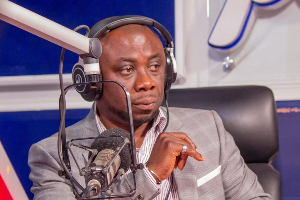Government’s indebtedness to suppliers, contractors, banks and state institutions is said to be having adverse effects on the liquidity of banks in the country.
Apart from government directly owing banks, suppliers and contractors also owe banks billions of cedis because they secured loans from banks to execute government contracts and provide services, but have not been paid.
According to sources, the situation is so bad that banks are forced to recycle the debt by issuing new loan certificates to pay off matured loans because debtors cannot pay their debts.
This development, the sources explained, is to ensure that the huge debts are not declared as bad loans.
In a letter to the International Monetary Fund (IMF), government outlined plans to clear GH¢5.4 billion debts to banks, suppliers and contractors.
According to the letter, GH¢1.6 billion will be paid this year, GH¢1.7 billion in 2016 and the remaining GH¢2.1 billion will be cleared in 2017.
Currently, government owes Bulk Oil Distribution Companies (BDCs) about GH¢3 billion in under-recoveries and forex losses.
The huge indebtedness has created serious liquidity crisis for the banks, and it will not be surprising if the special audit into banks’ balance sheets commissioned by the Bank of Ghana (BoG) to ascertain the true financial muscle and risk exposure of banks in the country reveal adverse findings.
The special audit, which has already started, is being undertaken by international accounting and auditing firm PwC, and will cover all the 28 licensed banks in the country.
The move to audit the banks is at the instance of the IMF amidst reports that banks are faced with huge credit risk and declining liquidity.
Currently, the structural liquidity of the banking system has changed from excess liquidity to liquidity shortage over the past year.
According to the Central Bank figures, total assets of the banks have gone down from GH¢58.3 billion in June to GH¢53.8 billion in July at the same time as deposits have declined from GH¢37.1 billion to GH¢34.1 billion.
Banks have also cut their loans and advances from GH¢29.8 billion in June to GH¢27.4 billion at the end of July this year.
Non-performing loans of the banks have increased from 11.2% in June to 13.1% at the end of July as a difficult business operating environment forces consumers to default on their credit facilities.
It is expected that the special diagnostic audit to review banks’ assets classification and valuation, provisioning and restructuring practices will help to determine whether a revision of loans classification and provisioning practices will be needed and new requirements introduced to rectify any potential provisioning shortfalls or prudential non-compliance.
It is envisaged that provisions of loans that have gone bad on banks’ books could go up on completion of the audit as some of the banks are thought to have recorded less provisioning for bad loans in order to make their balance sheet look good and keep their shareholders happy since per the International Financial Reporting Standards, any provision of bad loans ought to be deducted from the profits.
The Bank of Ghana has hinted that the minimum capital requirement of banks, which has already been increased from GH¢60 million to GH¢120 million, will further go up in order to strengthen the capacity of banks to undertake bigger transactions.
With their economies floundering and currencies sinking, African states that have borrowed heavily in dollars may be slipping back into the debt trap - and ultimately default - only a decade after a far-reaching round of debt forgiveness.
Assessments by credit agencies do not suggest defaults are imminent, but the ratings trend is downwards and negative outlooks prevail.
If it comes down to it, default and restructuring is likely to be messier than 2005 due to the presence of so many commercial investors in Africa's debt mix, as opposed to the bilateral lending that prevailed before then.
Top of the list of 'at-risk' countries, according to experts, is Ghana, the first African sovereign after South Africa to go to the international markets when it launched a debut $750-million Eurobond in 2007.
Since then, Ghana has issued two more bonds of $1 billion each, helping push total public debt to 71% of Gross Domestic Product (GDP).
This compares to 50% in 2005, the year anti-poverty campaigners Bono and Bob Geldof persuaded rich countries to write off billions of dollars owed by Ghana and other African nations.
Dr Henry Kofi Wampah dismissed the levels of debt - half of it in dollars - as "not very dangerous," but most analysts disagree, mainly due to the depreciation of the cedi.
When Ghana launched its debut bond in 2007 with an 8.5% interest rate, the cedi was virtually at parity with the dollar.
It is now around 4 cedis to the dollar, meaning government is in effect servicing a loan equivalent to $3 billion.
Government agreed a $918 million, three-year rescue package with the International Monetary Fund in April, but even if the programme works, the Fund admits the government's interest payments are likely to stabilise at an eye-watering 40% of revenues.
And in reality, the IMF package - essentially a dollar loan with slightly more favourable interest rates - is merely papering over the cracks.
One analyst described it as "a case of using one credit card to pay off another credit card.”
The only way to get the debt levels down is to raise income or cut expenditure drastically.
With growth slowing and a depressed outlook for commodity prices, balancing the books looks unlikely.
There is also the issue of moral hazard for the IMF, which, in positioning itself as a backstop, can be accused of encouraging reckless behaviour - both by rich-country lenders who know they will be bailed out, and by governments who fail to live within their means or wean their economies off commodities.
Business News of Tuesday, 29 September 2015
Source: The Finder

















